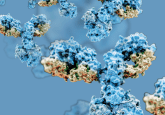Mitigation strategies for the biological matrix supply chain: an interview with Mark O’Dell
In this In the Zone podcast, we explore the current state of biological matrices supply chain and how mitigation strategies could ease struggles and disruptions currently being faced within the industry.
About the speaker
 Mark O’Dell
Mark O’Dell
Associate Director of Global Operations,
Immunochemistry
Labcorp Bioanalytical Services (MA, USA)
Mark O’Dell has over 18 years of experience working at bioanalytical CROs in a scientific role. He has experience in immunoassays, development and validation, regulatory and study support.
At Labcorp Bioanalytical Services, Mark serves as the Global Lead for the iChem Lead Scientists. He is responsible for the harmonization of processes and best practices for the iChem Lead Scientists and global execution of initiatives and consults with our clients on scientific and regulatory questions related to ligand binding assays. Additionally, Mark participates at AAPS, WRIB and GCC, and establishes and maintains strategic client relationships.
Mark received his MA in Biology / Biotechnology from Washington University (WA, USA) and his BA in Microbiology from South Illinois University (IL, USA). Mark has several publications in prominent journals, including the Journal of Neuroscience.
Questions
1) How has COVID-19 impacted the biological matrix supply chain?
The pandemic had an unforeseeable impact on the CRO industry by presenting matrix supply limitations for our pre-clinical studies, mainly Cyno and Rhesus. This occurred at a time when the growth in cell and gene therapy, as well as COVID-19 therapy trials that used non-human primates, grew extensively. Previously for some of our clinical studies, the target or disease state matrix was a limiting factor at times and we had to think strategically about our approach to various projects. On top of the limitations in pre-clinical studies that we are currently seeing, we are now in a similar scenario where previously available human material is now considered rare or hard to obtain. So, we now need to think strategically about our approach to pre-clinical and clinical studies.
2) What impact would the biological matrix supply chain disruption have on current and planned clinical trials?
The impact we are currently experiencing is a long delay in obtaining these once easily obtainable matrices. Historically, we could procure these materials within a couple of weeks. Now it’s taking months. Aside from the long lead time, we are also seeing an increase in costs associated with these matrices of around 10-100%. All of which yields a negative impact on our clients and their studies
3) What mitigation strategies are Labcorp Bioanalytical Services working to implement?
Currently, we are evaluating a couple of options:
First, we are evaluating our current in-house matrix supply to evaluate any unused materials from closed studies. We will then reach out to release those for use for other studies if they are within expiry.
Second, we are evaluating the use of a surrogate matrix to support our projects. We have been meeting internally with leaders from our various groups to discuss our approach to using surrogate matrix and how we would communicate this to our clients. This is a complex issue for method development, validation and sample analysis and the potential impact of using a surrogate matrix is being evaluated for each type of experiment. We are close to wrapping this up and hope to roll it out in July 2022.
4) How will these mitigation strategies help enable clients to maintain their study objectives and help the industry to maintain current trajectories despite disruption?
We are aiming to take a minimal risk to allow our client’s projects to move forward, and generate compliant data, thus allowing them to meet their submission dates and for us to contribute to the development of new therapies.
5) How do you foresee the clinical research industry evolving in the future given present disruptions? Why?
We have seen consultations with our clients to modify their study protocols to include additional draws for liquid matrices. Taking these additional draws from the placebo or pre-dose subjects will give us additional material to work with and use as a target population. While some things may not be foreseen, we should take a step back and consider various critical components and practices that may be at risk. This may allow us to look at things operationally for continuity, but also evaluate the scientific validity of things.
In association with:







